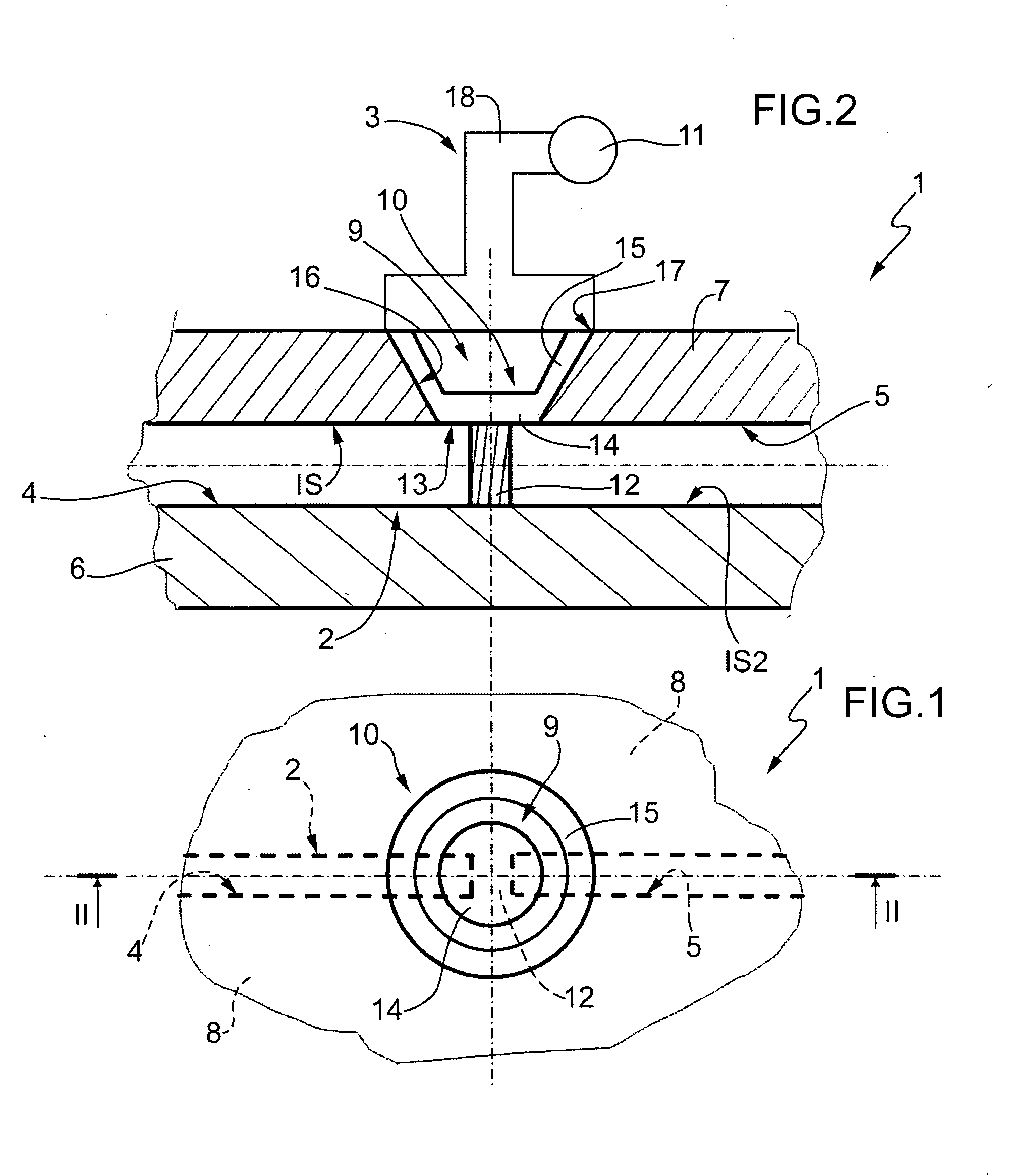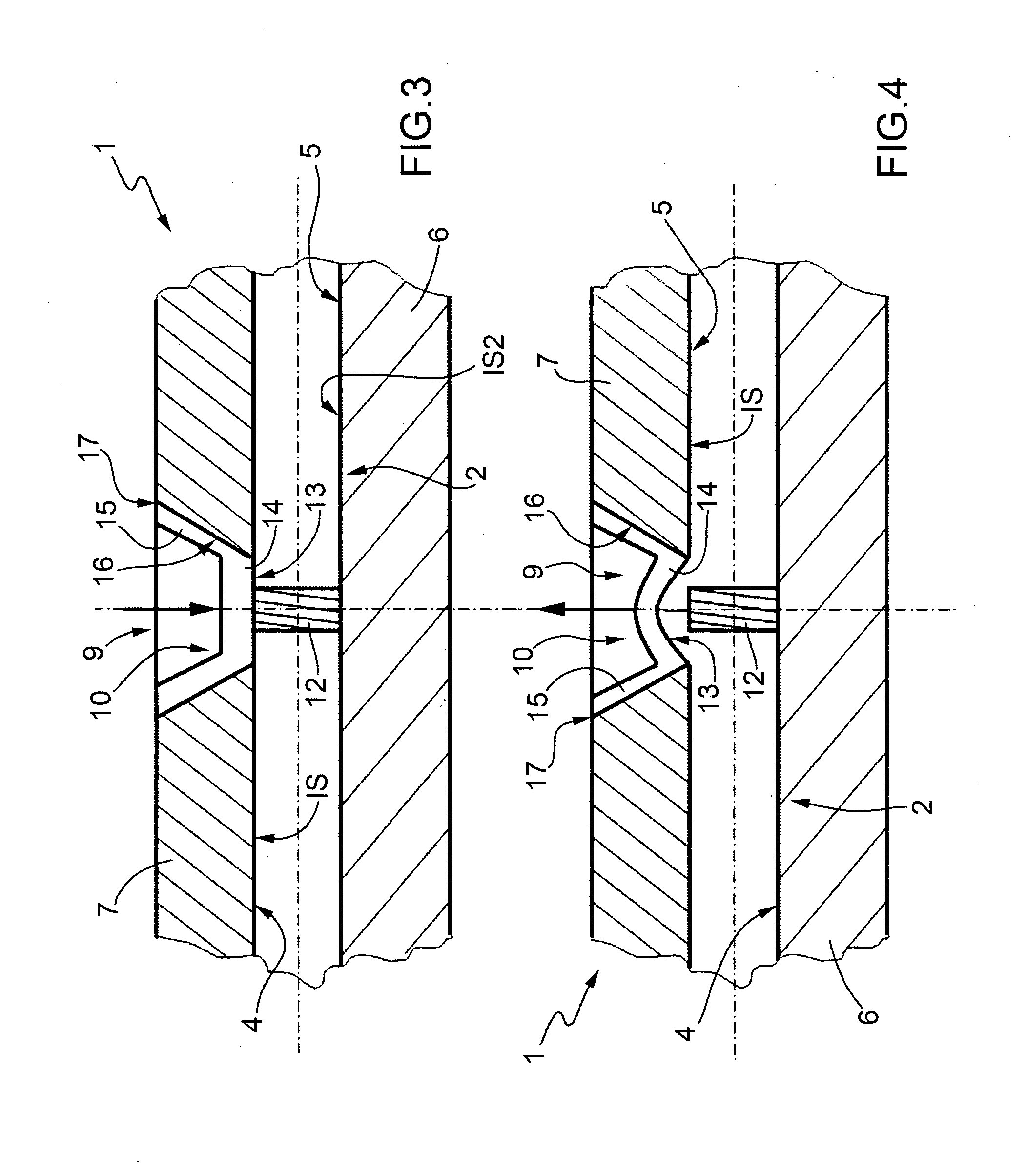Micro-Fluidic System
a microfluidic system and microfluidic technology, applied in the direction of branching pipes, pipes/joints/fittings, pipes, etc., can solve the problems of high energy consumption and considerable wear, pneumatic actuators having the suitable size to create both depressions and compressions, and the preparation of this type of valves is often complex and expensive, so as to achieve easy and cost-effective effect of implementation
- Summary
- Abstract
- Description
- Claims
- Application Information
AI Technical Summary
Benefits of technology
Problems solved by technology
Method used
Image
Examples
example 1
[0094]This example discloses the production of closing element 10 of the embodiment of FIGS. 1-4.
[0095]Closing element 10 was made of PDMS (polydimethylsiloxane) (Sylgard 184® of Dow Corning—it should be noted however that other materials may be used).
[0096]The hardening agent of PDMS (polydimethylsiloxane) and the base are mixed in a ratio of 1:10 and the mixture obtained thereby was poured in a hole 9 (FIG. 18) of a covering wall 7, which hole 9 is closed on the bottom by a base mould 23. PDMS was degassed in a vacuum chamber for one hour. A lid 24 is arranged on hole 9 to remove PDMS in excess and configure closing element 10 (FIG. 19). Wall 7 is inserted in an oven for 2 hours at 80° C. Closing element 10 is therefore obtained already connected to wall 7.
example 2
[0097]This example discloses an alternative embodiment of closing element 10 of the embodiment of FIGS. 1-4.
[0098]Closing element 10 was made of PDMS (polydimethylsiloxane) (Sylgard 184® of Dow Corning—it should be noted however that other materials may be used).
[0099]The hardening agent of PDMS (tetra methyl tetravinyl cyclotetrasiloxane) and the base were mixed in a ratio of 1:10 and the mixture obtained thereby was poured in a mould which reproduces the shape of closing element 10 in negative. PDMS was degassed in a vacuum chamber for one hour. A lid was arranged on mould 26 to remove PDMS in excess. The covered mould was inserted in an oven for 2 hours at 80° C. Closing element 10 was then extracted from the mould by using a cutter.
[0100]Closing element 10 and wall 7 are treated in a plasma reactor (Gambetti Plasma, Modello Tucano) by using the parameters of table 1 in O2 / N2 mixture.
TABLE 1Plasma activationPower, W40Voltage, V360Pressure, mbar0.3-0.4Time, s35
[0101]Closing elemen...
example 3
[0102]This example discloses the production of closing element 10 of the embodiment of FIG. 5.
[0103]Closing element 10 of FIG. 5 is obtained following the procedure disclosed in example 1 and using a base mould 23, a lid 24 and a wall 7 therefor as shown in FIGS. 6 and 7.
PUM
 Login to View More
Login to View More Abstract
Description
Claims
Application Information
 Login to View More
Login to View More - R&D
- Intellectual Property
- Life Sciences
- Materials
- Tech Scout
- Unparalleled Data Quality
- Higher Quality Content
- 60% Fewer Hallucinations
Browse by: Latest US Patents, China's latest patents, Technical Efficacy Thesaurus, Application Domain, Technology Topic, Popular Technical Reports.
© 2025 PatSnap. All rights reserved.Legal|Privacy policy|Modern Slavery Act Transparency Statement|Sitemap|About US| Contact US: help@patsnap.com



